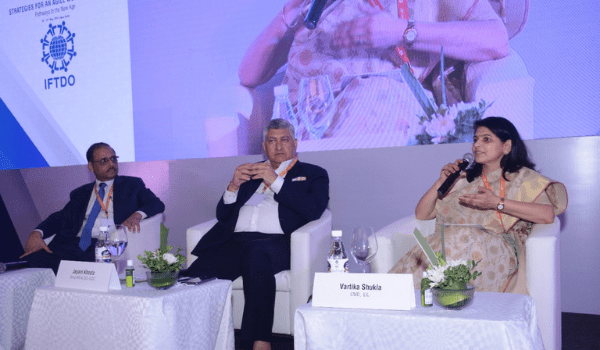When we speak of building an agile culture, we often talk of increasing the speed of decision making in an organisation. However, there are many factors that make it rather challenging for large companies to be faster and agile in their processes.
Many a time, when organisations try to achieve speed, they often compromise on obtaining leadership consensus in the company, which can turn out to be a greater or more serious issue in the long run.
How can speed be achieved along with consensus? Will focus on speed as part of the culture make the organisation lose out on consensus?
This was the topic for discussion for the esteemed CEOs who were part of the panel at the 49th IFTDO World Conference held from 19 to 21 May.
“We cannot practise speed as part of our company culture for the sheer sake of it. For me, it has to be well-directed speed, that is, speed with direction”
Jayant Khosla, CEO & MD, VLCC
On the second day of the three-day conference, the topic was “Building an agile work culture — Speed over consensus.” The speakers were Jayant Khosla, CEO & MD, VLCC and Vartika Shukla, CMD, Engineers India (EIL). The panel was moderated by Manoj Jain, CMD, Gas Authority of India (GAIL).
Agility is essential and important in an organisation, and all the speakers agreed to this. They admitted that agility is the perfect ingredient for the culture of the organisation, and is necessary for the long-term sustainability of the business as a whole.
Khosla described consensus as being more like alignment or a phenomenon where people may disagree but still decide to play along. How can that happen? Well, as per Khosla, when decisions are made based on pure data and rationale, everyone tends to be aligned with the decision.
Speed is important, admitted Khosla, provided it is well directed. “We cannot practise speed as part of our company culture for the sheer sake of it. For me, it has to be well-directed speed, that is, speed with direction,” said Khosla, going on to add, “One cannot compromise on quality for speed. Lack of consensus can lead to bad quality, which is not right”.
Jain believes that companies will need to analyse some of the areas where the element of speed can be brought in. He believes that short-term decisions and strategies can be made with more speed and decisions with a long-term impact can emphasise more on consensus. “Wherever possible, we should leverage the element of ‘speed’ in an organisation’s culture,” suggested Jain.
The speakers agreed that speed can be focussed on while giving feedback to disgruntled customers as fast as possible, rather than making them wait. Another area where speed is necessary is while attending to employees’ internal queries or problems.
Jain also drew attention to the fact that ‘agility’ is not just about speed alone. It is also about the agility of one’s strategies. Jain cited the example of GAIL, where strategies had been formulated 20 years ago, and people had not really looked back at them ever since. “Now, we review our strategies every six months and tweak them as per the requirements of the changing environment,” shared Jain.
“At times as leaders, taking a less correct decision may be a better option rather than not taking a decision at all”
Vartika Shukla, CMD, Engineers India (EIL)
People are also an important part of bringing in agility. “The quality of people in the organisation matters, as they are ones who are facing challenges. It is important to have people who can understand the changing challenges of the environment,” stated Shukla.
Shukla also talked about the importance of technology and digitisation in making processes faster and bringing in the speed element in a company’s culture. “We have seen a complete digitisation of the procurement process at EIL, which has further helped us enhance our speed. I would also mention that people are always at the centre of changing culture, irrespective of the nature of change,” said Shukla.
Very often, trying to obtain 100 per cent consensus on something leads to delays in the decision-making process. How can such situations be tackled?
“That is what leaders are for,” said Shukla, going on to declare, “You have to bring on board each and every member of the team and make them understand”. Also, Shuka also mentioned that taking a less correct decision may be a better option rather than not taking a decision at all.
“Leaders can bring consensus and make faster decisions,” added Khosla.
“Wherever possible, we should leverage the element of ‘speed’ in an organisation’s culture”
Manoj Jain, CMD, Gas Authority of India
The question is no longer about consensus or speed anymore. One has to have both in order to build a sustainable and agile work culture. Only the leaders can tell in which areas or for what kind of decisions speed can be leveraged.
In fact, consensus and speed will have to co-exist. It will be up to the leaders to decide when to emphasise on consensus and when to give more importance to speed.



